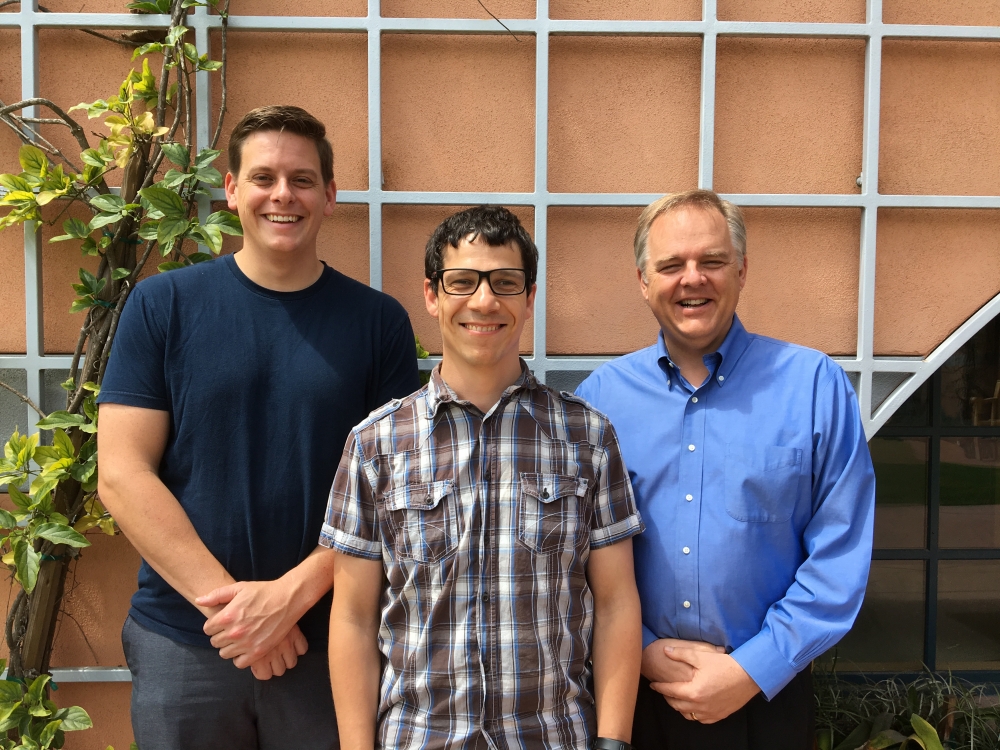

Scientists can tell a lot about a star by the light it gives off. The color, for example, reveals its surface temperature and the elements in and around it. Brightness correlates with a star’s mass, and for many stars, brightness fluctuates, a bit like a flickering candle.
A team of scientists led by UC Santa Barbara researcher Thomas Kupfer recently discovered a new class of these pulsators that vary in brightness every five minutes. Their results appeared in The Astrophysical Journal Letters.
“Many stars pulsate, even our sun does on a very small scale,” said Kupfer, a postdoctoral scholar at UC Santa Barbara’s Kavli Institute for Theoretical Physics (KITP). A true pulsator can vary in brightness by some 10% due to a periodic change in its temperature, radius or both. “Those with the largest brightness changes are usually radial pulsators, ‘breathing’ in and out as the entire star changes size,” he explained. By studying pulsations in detail, scientists can learn about these stars’ interior properties.
Initially, Kupfer and his colleagues at Caltech were searching for binary stars with periods less than an hour in observations from the Zwicky Transient Facility, a sky survey at the Palomar Observatory near San Diego. Four stood out due to large changes in their brightness over just a few minutes. Follow-up data quickly confirmed that they were indeed pulsators, not binary pairs.
Working with his Caltech collaborators, alongside former UC Santa Barbara doctoral student Evan Bauer and KITP Director Lars Bildsten, Kupfer has now identified the stand-out stars as hot subdwarf pulsators. A subdwarf is a star about one-tenth the diameter of the sun with a mass between 20 and 50% that of sun. They’re incredibly hot — up to 90,000 degrees Fahrenheit, compared to the sun’s 10,000 F. “These stars have certainly completed fusing all of the hydrogen in their core into helium, explaining why they are so small and can oscillate so rapidly,” said Bildsten.
The discovery came as a surprise. Scientists hadn’t previously predicted the existence of these stars, Kupfer explained, but in retrospect they fit well into the leading models of stellar evolution.
Because of the stars’ low masses, the team believes they started life as typical sun-like stars fusing hydrogen to helium in their cores. After exhausting the hydrogen in their cores, the stars expanded into the red giant stage. Usually, a star will reach its largest radius and begin fusing helium deep in the core. However, the scientists think these newly discovered stars had their outer material stolen by a companion before the helium became hot and dense enough to fuse.
In the past, hot subdwarfs were almost always related to stars which became red giants, started fusing helium in their cores, and then got stripped by a companion. The new findings indicate that this group includes different types of stars. “Some do helium fusion and some don’t,” Kupfer said.
The stars’ pulsations allow scientists to probe their masses and radii and compare these measurements to stellar models, something that was not otherwise possible previously. “We were able to understand the rapid pulsations by matching them to theoretical models with low mass cores made of relatively cold helium,” said Bauer.
"Sky surveys are transforming astronomy, and the Zwicky Transient Facility is helping pioneer this approach," says the National Science Foundation 's Richard Barvainis, who oversees the agency's grants in support of the facility. "This latest result is a perfect example — by watching distant stars pulsate over a matter of mere minutes, astronomers have gained unexpected insights into stellar evolution."
Kupfer believes there’s more to come. “I expect that these large, time-domain surveys like the Zwicky Transient Facility will bring many unexpected discoveries in the future,” he said.
These research efforts at UC Santa Barbara are supported by the National Science Foundation, as well as the Gordon and Betty Moore Foundation. The Zwicky Transient Facility is funded by the National Science Foundation, NASA and the Heising-Simons Foundation. Other contributing institutions include Caltech, the University of Washington, the University of Maryland, the Humboldt University of Berlin, the Weizmann Institute of Science and Boston University, as well as an international collaboration of additional partners.



